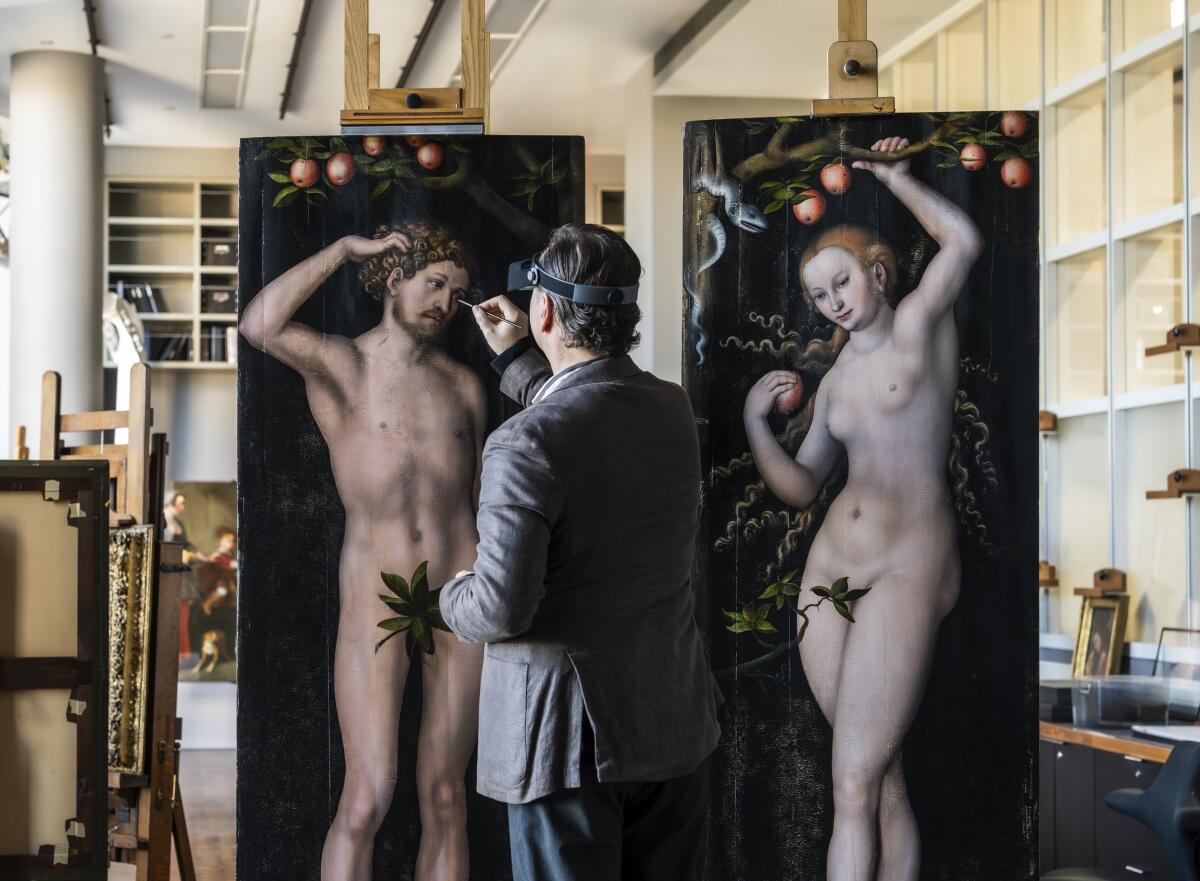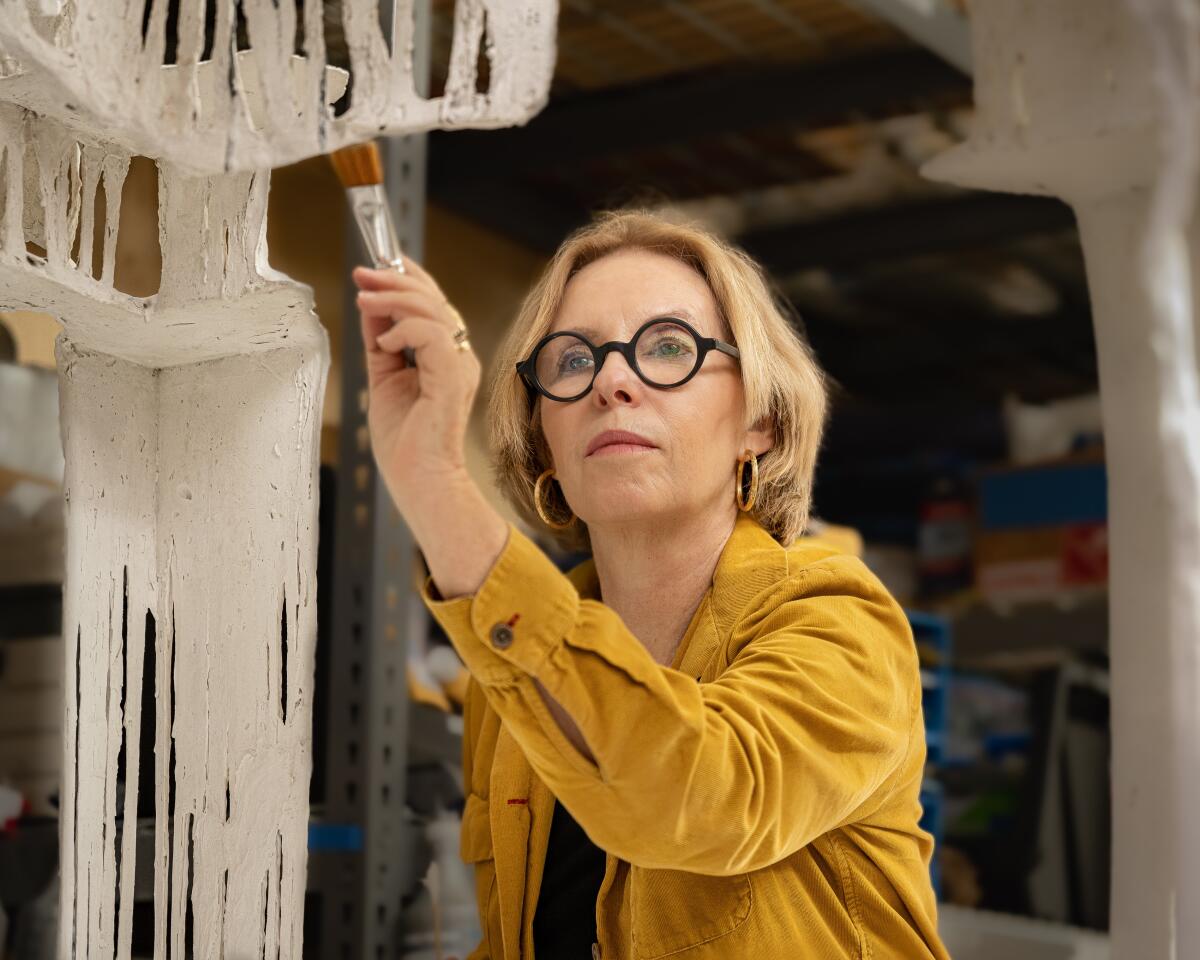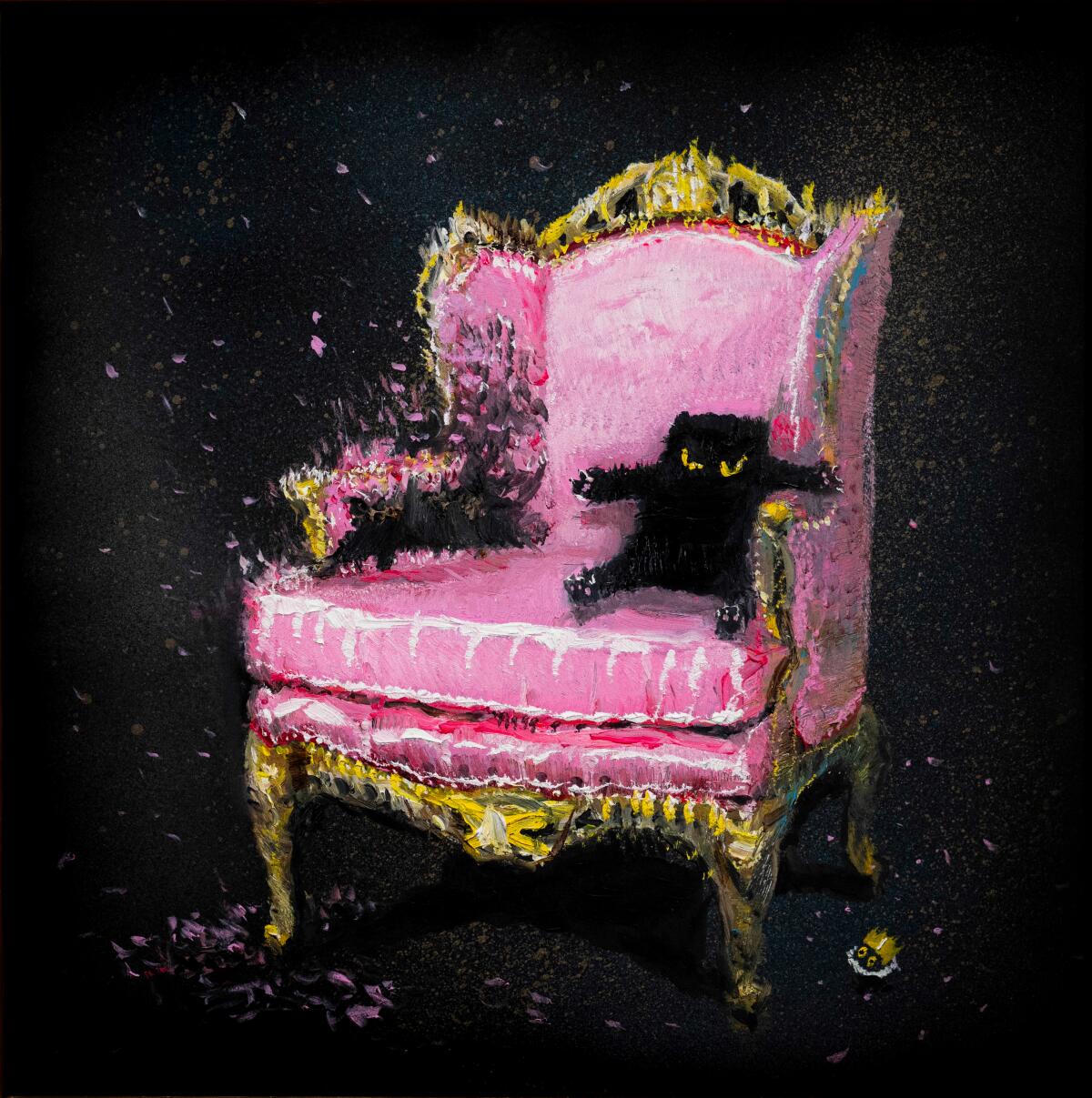How art conservators fix artistic treasures that may seem beyond repair

- Share via
I’ve had Nancy Sinatra’s “These Boots Are Made for Walkin’” on repeat for no good reason. I’m Carolina A. Miranda, art and design columnist at the Los Angeles Times, and I’m just itching for a good walk — and some essential arts news:
A story of repair
For two and a half years, conservators at the Getty have been working on the cracking limewood panels that bear one of the greatest treasures of European art in L.A.: a pair of 16th century paintings by Lucas Cranach the Elder featuring Adam and Eve. After plenty of tender loving care by a conservation team that included Ulrich Birkmaier, George Bisacca and José de la Fuente, the painting, which is in the collection of the Norton Simon, will be going on view at the Getty for three months starting next week.
Times art critic Christopher Knight followed the conservation process, which he reports has left the works “beautifully restored.” “Adam” and “Eve,” he notes, are “one of those great have-your-cake-and-eat-it-too images.”

I’ve always been curious about the work that conservators do. Artists get the glory, but conservators are the behind-the-scenes workers who help assure that glory is lasting. An artist can help you see the world in flashes of color or as a conceptual joke; conservators teach you about the nature of materials and how they hold.
In her memoir “Dwell Time,” L.A.-based sculpture conservator Rosa Lowinger weaves stories of materials and conservation with those of her own Cuban Jewish family, who first fled Europe, then fled Cuba after Castro’s revolution. (Full disclosure: Lowinger is a friend.) Her book, inspired by the structure of Primo Levi’s “The Periodic Table: A Memoir,” weaves family tales around the materials she works with: plastics, ceramic, glass.
“Our job was not simply to ‘repair things,’” Lowinger writes of her chosen profession in the book. “Our task was to do our work in a way that nullified our presence, refrained from fanciful interpretations, and remained reversible. Reversibility, especially, was fundamental. Everything we used or did had to be removable by someone else in the future. What a moving, transcendent idea. Our mark was to be temporary, short term. We were beholden to the object and were not to change it permanently.”

Time contributor Jessica Ferri spoke with Lowinger about what sparked her memoir and what it meant to dig deep into the uncomfortable fractures within families.
“As you crack open the story, I had to crack open mine,” says Lowinger. “I was writing about my mother, who is charismatic and funny but monstrously destructive, I would have to get up and hyperventilate a bit. It wasn’t painful, but it felt like surfing in the Pacific Ocean.”
You’re reading Essential Arts
Our critics and reporters guide you through events and happenings of L.A.
You may occasionally receive promotional content from the Los Angeles Times.
I had the great pleasure of chatting with Lowinger about the book as part of the L.A. Public Library’s Aloud series. (You can find the archived YouTube video here.) If you feel like you missed out (you did!), Lowinger will be back in the hot seat on Sunday with Cuban visual artist Alexandre Arrechea (whom I profiled in October) at the Skirball Cultural Center. Things get rolling at 2 p.m.; find all the deets at skirball.org.
On and off the stage
The Times’ Ashley Lee reports on a lawsuit filed by actor Zuri Washington, who appeared in the recent revival of the stage musical “1776.” In the complaint, Washington alleges that the producers dismissed her hair preferences and that she was terminated after expressing her intent to file a discrimination report. “I was made to feel like I did something wrong in the course of this entire experience, and I know I didn’t do anything wrong,” Washington tells Lee. “I could have done things differently, perhaps. But what they did to me is like a legal version of tone-policing, and like I’m being constantly punished for existing and telling my truth.”

Tragedy in Brazil
Earlier this week, New York gallerist Brent Sikkema, co-founder of Sikkema Jenkins & Co., was found stabbed to death in his Rio de Janeiro residence. The 75-year-old art dealer had begun to step back from day-to-day duties from the gallery he helped establish, according to the New York Times, and was living in Rio part of the year.
On Thursday, a suspect identified as Alejandro Triana Trevez was arrested near the city Uberaba in the state of Minas Gerais. Police say Trevez took $3,000 from Sikkema’s home and that he traveled to Rio from Sao Paulo “specifically to commit the crime.”
Enjoying this newsletter? Consider subscribing to the Los Angeles Times
Your support helps us deliver the news that matters most. Become a subscriber.
Among the artists handled by Sikkema Jenkins is Jeffrey Gibson, who will represent the U.S. at the next Venice Biennale.
In and out of the galleries
It is the 10th anniversary of L.A.’s great Cat Art Show and this year’s iteration will draw about 50 artists to the Wallis Annenberg PetSpace in Playa Vista. “The Cat Art Show,” writes contributor Leigh-Ann Jackson, “delivers just the right amount of camp but holds enough cool-kid appeal (think graphic artists Yusuke Hanai and Eric Haze) to attract those who don’t consider themselves furball fans.”

Matt Stromberg at Hyperallergic has a fascinating story about a mural by Asco member Willie Herrón that was lost and then found at an estate sale — and is now at the center of a conflict.
Plus, Andrew J. Campa and Rong-Gong Lin II report on the final installation of the Space Shuttle Endeavour’s giant orange fuel tank at the new Samuel Oschin Air and Space Center.
Moves
The National Trust for Historic Preservation has announced a new round of grants to help preserve Black churches.
Passages
David Kunzle, an art historian, curator and poster collector who sat on the board of the Center for Political Graphics, has died at the age of 88. Charles Hatfield at the Comics Journal pays tribute to a thinker who approached comics “as part of a long history of contentious political art.”
Architect Eugene Aubry, a late Modernist known for his unpredictable range of designs, including Houston’s Rothko Chapel, has died at 88.
In the news
— Over at the Art Law Report, Nicholas O’Donnell writes that a recent case centered on a Nazi-looted painting owned by Lily Cassirer was “thinly reasoned.”
— Be still my beating heart: Jen Graves, a former art critic for the Stranger, has low-key reemerged via a new newsletter called “Still Looking.”
— Rainey Knudson riffs on all the artists that AI art’s scraper bots are missing.
— Philip Clark at the New York Review of Books has a look at “Maestro” and the legacy of Leonard Bernstein it is missing.
— Saudi Arabia wants to construct more wildly unhinged architecture.
— Bloomberg’s “Design Edition” gets into the connection between the Pritzker Prize and Jeffrey Epstein.
— The Getty Villa’s carrot cake recipe.
And last but not least ...
This newsletter may or may not be late because I was running around with a placard in a park.
The biggest entertainment stories
Get our big stories about Hollywood, film, television, music, arts, culture and more right in your inbox as soon as they publish.
You may occasionally receive promotional content from the Los Angeles Times.




